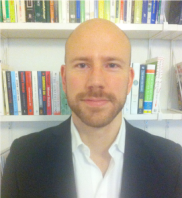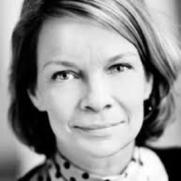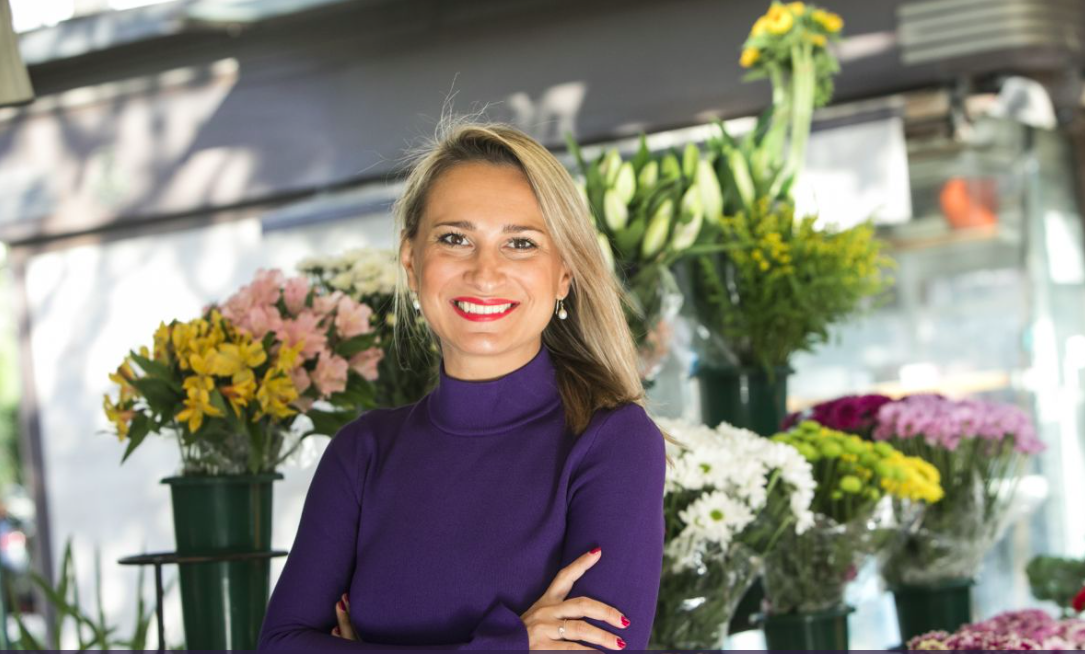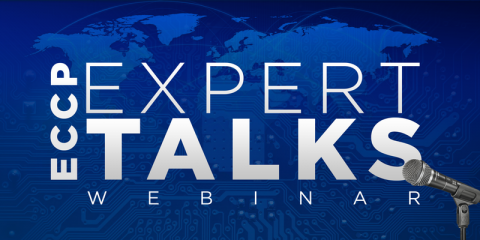A Summary of the Second ECCP Expert Talks Webinar: Cluster Marketing and Branding
Following the interest expressed by the ECCP cluster community to discuss themes of real interest in a facilitated dialogue with experts, the second ECCP Expert Talks Webinar took place on 13.9.2018, addressing the issue of cluster marketing and brading. The interest was very high with more than 100 applications from 30 countries. For the people who could not attend we prepared below a summary of the webinar (presentations and questions), the speakers' written presentations and a link to the recording of the webinar.
Agenda:
Opening of the webinar – Lucia Seel, ECCP Communication & Content Manager, moderator
1. Presentations
- Marcus Andersson – CEO and Co-founder of Future Place Leadership, Sweden
- Merete Daniels Nielsen –Cluster Excellence Denmark - Director, TCI Global Network for Clusters - Member of the Board
- Bianca Dragomir – cluster manager AVAESEN, Spain, European Cluster Manager of the Year 2016-2018
2. Q & A
3. Closure of the webinar
Lucia opened the webinar by presenting the invited speakers, saluting the participants and pointing out that due to restricted number of places available, only 100 participants could register, but all presentations as well as a summary will be made available soon to the entire ECCP community. The functionalities of the webinar tool (GoToWebinar) were also presented.

Marcus Andersson’s presentation “Cluster Marketing and Branding” started with the key question of why a cluster brand is important and he underlined the benefits for a cluster as identified from the research workdone by Future Place Leadership. The fact that global cluster organizations placed identity and branding first among their top priorities shows how important the theme is. Participants were invited to read the “Cluster Initiative Greenbook” for more detailed information on the subject.
Further on, Marcus outlined the main subjects in his presentation:
- the difference between branding and marketing - a clear distinction between these two concepts is to be made, as they are interrelated but different concepts,
- main challenges in creating a cluster brand and
- smart marketing – how to ‘cut through the noise’ in competing with others who also wants to communicate, how to get your targeted audience’s attention, while disposing of limited resources which makes it important to be innovative in this undertaking.
Participants were also invited to read the Future Place Leadership’s publication “Cluster Brand Management Handbook” for other related topics on the subject. The company was also presented in what their activities’ scope is, the focus of their studies/researches and customer basis, main publications.
Before addressing the first subject Marcus emphasized three key words in branding & marketing, which are:
- identity- the very foundation of a brand,
- inclusiveness-or bringing on all members of the cluster to help build the brand and become its ambassadors, and
- innovation in the process of branding and especially marketing.
The difference between marketing and branding was revealed as the difference between a rather tactical/operational endeavour aimed at selling a product more efficiently (marketing), versus a more strategic one, aimed at improving the overall image and reputation of a cluster, branding being not only about marketing but about what the organization does as a cluster.
Marcus elaborated more on the cluster brand management or how a cluster manages its reputation and achieves a distinct position based on its identity and what it does most effectively, detailing the concepts of cluster identity and strengths and their importance in building a brand.
The challenges to branding & marketing lie in the ownership and control of a brand – the cluster is not owning the brand itself (but its members/stakeholders) and has therefore limited control on all aspects of a brand. Marcus pointed out that it is important to think of a brand as a relationship between all members of a cluster and the rest of the world.
Solutions to these challenges were also proposed: defining the cluster’s identity by amplifying what it does best rather than creating new competencies, aligning at all times actions and words, and promoting partnership, inclusiveness and dialogue between cluster members.
Smart and innovative marketing was then addressed as the final part of Marcus’ presentation, with few tools for cost efficient marketing such as storytelling, digital marketing, co-created marketing, content marketing, inbound marketing and creative & humoristic campaigns and events. For each of these tools Marcus explained the concept, exemplified each of them with real life cluster-implemented methods as well as offered measurable results.
Marcus thanked the audience for the attention and wrapped up his presentation in few lines, also offering the link to the book published by Future Place Leadership for other successful marketing activities to be considered by participants as well as extending an invitation to the next Cluster Branding & Marketing Master Class training on 20-21 March 2019 in Brussels.
Lucia thanked Marcus for the interesting and inspiring presentation accompanied by very concrete examples, reminding the audience that questions are possible after all three presentations are made and inviting the next speaker – Merete - to make her presentation on how clusters, individually and collectively are working with communication from the perspective of a national cluster network.

Merete started her presentation “Branding of Clusters. Danish Challenges and Solutions” by underlining some of the key learnings from clusters’ branding, challenges faced as well as solutions reached. She mentioned the obstacles clusters encounter in their branding efforts and the support the network (Cluster Excellence Denmark)offers to overcome them. Such a supportaims at the professionalization of cluster communication, storytelling about Danish cluster landscape, finding out which media is more efficient, support for international communication, etc.
One of the means Merete mentioned that Danish clusters are resorting to in order to enhance their brand and identity recognition is the cluster certification, a gold certificate giving the clusters more contacts/partnership requests.
She also emphasized the measurable benefits of companies that are active cluster members as opposed to others in terms of innovation, productivity growth, internationalization, etc. Based on this, Merete presented the concrete ways in which Cluster Excellence Denmark supports clusters in their communication efforts:
- the Whitebook of Cluster Communication,
- the knowledge exchange workgroup as an ongoing project,
- a toolbox on cluster communication published on the network’s webpage, as well as
- the event ”Future Week Denmark”launched in 2017 – as a tool for common branding, aiming to bring clusters in Denmark to organize within the respective week - with maximum media attention! - different events and reach out to the broader community, and make themselves visible,
- the newsletter issued twice a month
- Web and social media
- Annual Performance Accounting for clusters
Merete shared the lessons learned both from the network and clusters’ perspectives, such as: making communication an integrated part of the cluster strategy, gather all cluster members to shape the right media as well as placing a bigger emphasis on international communication adding that 18 Danish clusters are profiled on ECCP for EU visibility and some are also members of TCI, for global visibility, and offered the link to TCI’s webpage. Ending her presentation Merete thanked for the attention and presented the contact data of Cluster Excellence Denmark for interested participants to visit.
Lucia thanked Merete also for the interesting presentation and offered the floor to Bianca Dragomir, cluster manager of AVAESEN in Spain but also the European cluster manager of the year for the period 2016-2018.

Bianca started her presentation “Cluster Branding that Matters” -that was unfortunately made under sub-optimal conditions due to technical issues by thanking ECCP for the opportunity they offered to AVAESEN to share their experience.
Starting from the fact that clusters are multipliers, a successful cluster branding can produce powerful systemic effects, as multiple stakeholders will be reached out within the cluster to become engaged, to be part of the change a cluster leads, to share a common sense of identity. This is defined by Bianca as branding that matters, that creates a shift, a change. This should be considered along with the “branding that makes it rain” namely, helping attracting resources to the cluster andmaking it self-sustained. Building such a brand starts with showing by doing, continues with showing by telling and then selling by showing. Bianca recalled her beginnings at AVAESEN when the region, industry sector (solar energy) were shrinking due to the cut of public financing and struggling in the middle of a crisis as well as how strategic branding was the driver for the turnaround in 2013. And this started with re-shaping the purpose of the cluster and its identity, which is – as Marcusmentioned in this presentation - the foundation of brand building. It was a great practical example for a cluster branding process triggeredby all the real life challenges faced by the cluster members. And by looking at enlarging the ecosystem of the cluster beyond the traditional energy sector to a broader clean-tech environment, integrating a multiple needs approach, the cluster started attracting more players and built its image as the focal point on this ecosystem, an innovation ecosystem rather than only a network, living up the slogan chosen for the cluster: “The energy that transforms us”.
Bianca showed how the identity of the cluster is conveyed to the community through their website messages, how the cluster generates business and supports co-branding of different projects with AVAESEN, the project ThinkSmartCity that turned from a working group to a “cluster within a cluster”, from 3 members to over 140 and with a great degree of inclusiveness.
Bianca’s concluded that cluster branding means much more than behavior and development of a cluster, it is its uniqueness, leadership, marketing and media and recommendedthe colleagues cluster managers in the audience the very first step to be taken should beshaping the cluster identity, as clusters are powerful entities that can bring change in the entire ecosystem.
One question raised was:
- Is there a dedicated resource needed for communication/branding, a cluster brand manager, the time involvement vs other cluster activities (workshops, project management, internationalisation, out of their respective experience/perspective?
While Bianca mentioned AVAESEN’s experience, where they started with scarce resources and still managed to build a strong brand by offering valuable content, addressing real needs of members, even though at the beginning only using affordable social media channels, Merete completed by saying that normally there are no dedicated resources such as full time communicators/journalists, so the board members should find out what are the priorities and the most suitable media to address the targeted audience depending on their preferences, or resort maybe to co-branding by joining forces with other stakeholders. Marcus re-emphasized the fact that branding is a much broader endeavour and clusters need to integrate branding in every activity they perform, so that it is not only up to the communication manager but to the cluster manager to make sure all members opinions align on how they want the cluster to present itself; the cluster has to have a brand-oriented cluster management. The time expense for branding is thus difficult to estimate as it has to be agreed that everything they do impact the brand while all activities they do help to build the brand by bringing the cluster to live up to the expectations. Marketing on the other hand doesn’t need to be expensive if inclusiveness and smart marketing are considered. Thus, for an efficient branding&marketing the discussion should not be about resources to be allocated but about creating a mind setting.
Another question followed on how important is to plan marketing strategies based on different media vs. ‘old fashion’ face to face meetings and how useful are face-to face contacts of the board with members, stakeholders for testing/selecting feedback and adapt your marketing strategies accordingly.
Merete agreed that feedback from members is very important but also there are times when cluster management has to bring in up-to-date media options as for example LinkedIn, which in latest years replaced Facebook as a communication means for clusters, or even set KPIs for staff to be active on media about cluster activities they take part in. While underlying the fact that a cluster should start doing and then telling, so that specific cluster activities should always weigh more than telling about them (marketing), Bianca mentioned this approach as a basis for reaching out to media with a solid content to present.
The last question was related to the existence of information/experience re-branding an existing cluster. Marcus admitted that re-branding is possible if you have a clear idea of how you will live up to the expectations of the new brand, a credible way of becoming what your brand says about you.
Lucia thanked all participants and the speakers and closed the webinar with the information that all presentations, a summary and the recording of the webinar as well will be made available on ECCP soon, while kindly asked participants to answer the feedback questionnaire to be sent soon.
Please find below the recording of the webinar as well as in attachment the speakers' presentations.
